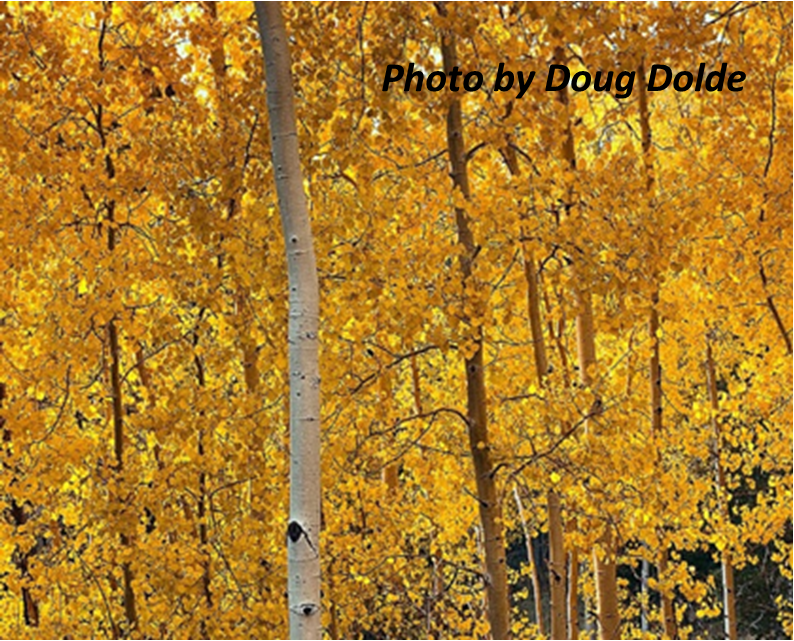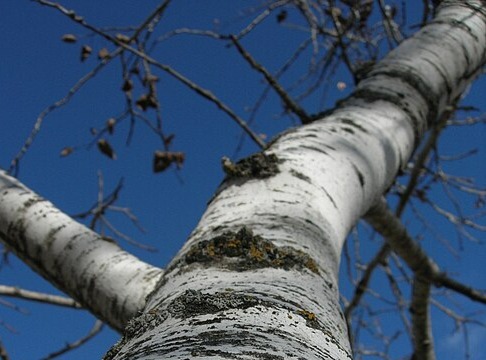Quaking Aspen

AKA: Trembling aspen, golden aspen, mountain aspen, white poplar, popple
Quaking aspens often grow in dense stands, creating a stunning golden vista when their leaves change color in the fall. A stand of quaking aspens is called a clone: each stem shares the same root system underground. While individual stems may only live 50-60 years, the clone can survive tens of thousands of years. They are used for fuel and to make paper, particle board, furniture, and hamster bedding.

Fun Facts:
- Most widespread tree in N. America, adapted to different climates by growing low on mountains in the north, high in the southwest. Notable absence in the southeast due to lack of high-elevation mountains.
- “Quaking” leaves moderate sun exposure, promote air circulation for photosynthesis, regulate temperature, protect leaves from wind and insects.
- Bark photosynthesizes, producing sugar for energy even in winter.
- Ruffed Grouse use aspen for food and nesting; bark and sap feed animals like deer, porcupines, beavers, voles and Yellow-bellied Sapsuckers.
- Pando, a clone in Utah is considered the world’s largest tree by weight and landmass: covers 106 acres, ~47,000 individual stems, currently threatened by overgrazing.
